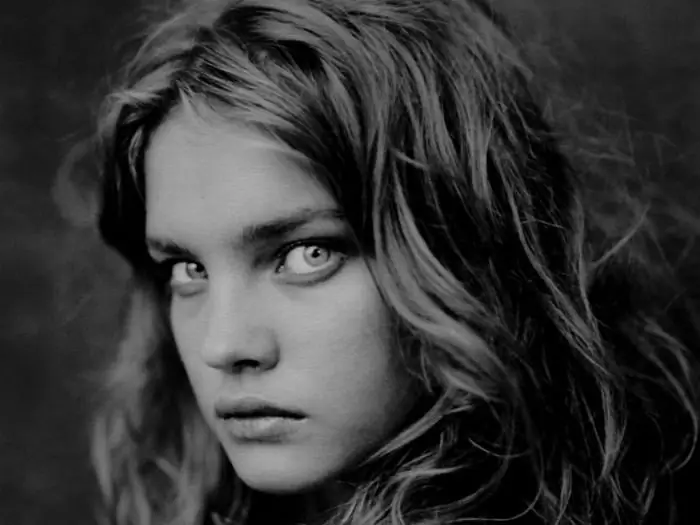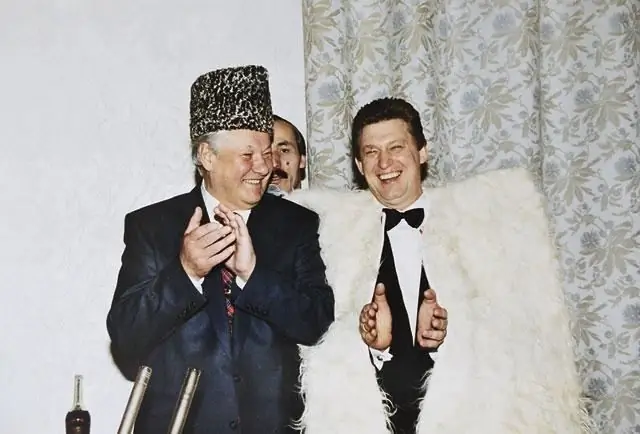- Author Henry Conors [email protected].
- Public 2024-02-12 02:46.
- Last modified 2025-01-23 09:07.
Olga Lepeshinskaya is a ballerina whose biography is very interesting. She danced leading roles at the Bolshoi Theater, enjoyed the respect of Stalin and great prestige throughout the world. We will talk about the fate of this great woman in this article.

Origin
Lepeshinskaya Olga Vasilievna was born in 1916 on September 28 in the family of Maria and Vasily Lepeshinsky. This family survived the revolutionary upheavals and the civil war relatively calmly, and when the liquidation of devastation began in Russia, the girl’s father, a gifted engineer who also built the Chinese Eastern Railway, became very popular with the new government as an expert in bridge design. The Lepeshinskys were hereditary nobles, but the repressions and regular purges of the "former" did not touch them. Olga's grandfather was a well-known Narodnaya Volya, and her cousin was in exile with V. I. Lenin - and it was the best indulgence in the 1920s.
Childhood
Olga Lepeshinskaya lived a measured and calm life with her parents in Moscow on Solyanka. The girl's father and mother dreamed that their daughter would continue the family dynasty and become a bridge engineer. However, Olga had completely different intentions. She loved to dance since childhood and wanted to become a ballerina. Therefore, she soon entered the State Ballet School at the Bolshoi Theater.
The training of future artists in this educational institution was taken very seriously, because many of them then ended up in the Bolshoi Theater. And Olga Lepeshinskaya entered the famous stage very early - at the age of 10. Then the second-graders portrayed a flock of birds rejoicing at the arrival of spring in the opera The Snow Maiden. Then the girl made her debut in her first real role - she embodied the image of the Dragee Fairy in The Nutcracker. And after graduating from the ballet college, into which the school was reorganized in 1931, Olga danced the main part.

Road to Glory
At the age of 18, Olga Lepeshinskaya became famous. In 1935, she was involved in the premiere ballet "Three Fat Men", where she performed the part of the girl Suok. Her performances were enthusiastically received by the public, and the press dubbed the young ballerina a rising star.
In addition, the young celebrity began to actively engage in social activities, first became a member of the district committee and the Moscow city committee of the Komsomol, then, four years later, a deputy of the Moscow Council. By that time, on the posters, the ballerina began to be called the “order bearer”, and in 1937 she was awarded the Order of the Badge of Honor. For the artist, who recently celebrated her twentieth birthday, it wasreal recognition and a guarantee of a brilliant career.
Different roles
However, not everything in the fate of the young celebrity went smoothly. The repressions of the 1930s still did not bypass the ballerina's family. Once Aunt Olga was arrested, but, fortunately, this did not affect the life that Lepeshinskaya Olga Vasilievna led. In the theater, the artist performed new parts all the time. She portrayed Zina in The Bright Stream, embodied the image of Princess Aurora in The Sleeping Beauty, danced Polina in The Prisoner of the Caucasus and Masha in The Nutcracker. She also had the opportunity to perform the part of Odette-Odile in Swan Lake. Olga was often and favorably spoken of in the press. But the ballerina herself was far from always satisfied with what she did. For example, when she felt that she could not bring the part of Odette to perfection, she asked the leadership to release her from participating in Swan Lake. Such a case was unprecedented for that time. And Olga called the part of Svetlana in the production of the same name and Kitri in the ballet Don Quixote her best roles. Lepeshinskaya never suffered from a "star" disease and realistically assessed her achievements. At the end of her career, she claimed that her choreography was not outstanding, but her natural technique and fiery temperament made her inimitable.

Olga Lepeshinskaya and Stalin
The ballerina's career was very successful because she was very strict with herself and constantly engaged in self-improvement. The performances of the artist were so good that he drew attention to herStalin, jokingly called the "dragonfly", and after the establishment of the Stalin Prize, he personally included her name in the list of the first laureates. This happened before the start of the Second World War, therefore, having received huge money (100,000 rubles), Olga gave most of it to the defense fund. The leader of the peoples always had a weakness for Lepeshinskaya and often spoiled her with expensive gifts. Once in the Kremlin, the ballerina drank champagne, and she really liked the glasses. The next day, a pair of such wine glasses was delivered to her with the engraving “Dragonfly Jumper from J. Stalin.”

War years
Olga Lepeshinskaya is a ballerina with a rich biography. During the war, the Bolshoi Theater was evacuated to Kuibyshev. In those years, the ballerina not only constantly performed on stage, but also traveled all over the country with concerts. She repeatedly danced in front of the soldiers at the front. Once, her concert team almost ended up being captured by the Germans. Lepeshinskaya found out about this only in 1975, when she received a letter from an officer who was at that speech. He said that immediately after the concert and the departure of the artists, the Nazis blocked the road and a bloody battle ensued. They say that Lepeshinskaya, who had accumulated 14 orders by the end of her life, considered the medals “For Valiant Labor in the Great Patriotic War of 1941-1945” to be the most expensive awards. and “For the Defense of Moscow”, rightly believing that her contribution to the victory over the Nazis also exists.

New achievements
Olga Lepeshinskaya worked hard during the war years. Her newAssol's party in "Scarlet Sails" became a big role. In 1943, she already danced in Moscow on the stage of the Bolshoi Theater. The first production in the post-war years, in which the ballerina was involved, was Cinderella by S. Prokofiev. In it, the ballerina performed the main part. The image embodied by Lepeshinskaya was very appropriate for the time, because happiness and long-awaited love come to her heroine after difficult trials. For this role in 1946, Olga was awarded another Stalin Prize. After that, in 1947 and 1950, she received two more - for the parts performed in The Flames of Paris (Jeanne) and The Red Poppy (Tao Hoa). In 1951, Olga Vasilievna, together with Galina Ulanova, was awarded the title of People's Artist of the USSR.
Private life
Olga Lepeshinskaya, whose personal life interests many, got married three times. In 1956 she met General Alexei Antonov. After a while, the lovers got married and lived happily ever after. For the ballerina, this was the third marriage. Then Lepeshinskaya's colleagues joked that she had gone on promotion, because her previous husband was Lieutenant General Reichman Leonid. In 1951, he was suddenly arrested, but the ballerina managed to negotiate his release. There were many rumors about this, but the truth was known only to her, Beria and, possibly, Stalin. The artist's family broke up after that.
The third marriage of the ballerina was happy, but in 1962 Antonov died suddenly. Olga Lepeshinskaya experienced this loss very hard, she almost lost her sight. After that, performances in the theater could be forgotten. Visionover time, it was possible to restore, and for several years the artist worked in Italy, studying with young ballerinas. Then Olga Vasilievna tried to return to the stage again. However, she realized that her choreography had changed, the joy and elation that distinguished her dances were gone. Then Lepeshinskaya went abroad for many years.

Pedagogical activity
Olga Lepeshinskaya, whose photos were published in the most famous publications in the world, worked in different countries. She created national ballet troupes, passed on her rich experience to novice ballerinas. Olga Vasilievna really wanted to work in her homeland, but here her pedagogical abilities were not appreciated. At the same time, the authority of the artist in the theatrical environment was indisputable, for more than thirty years Lepeshinskaya was the head of the organizing committee of international ballet competitions in Moscow and the president of the Russian Choreographic Association. This wonderful woman had so many honorary titles and international awards that she even found it difficult to remember some of them.
Legacy
Olga Lepeshinskaya, whose biography is very instructive, was a person of seething energy, until the last days she continued to work. The great artist died in 2008 on December 20, and she was buried in Moscow at the Vvedensky cemetery. However, the glory of the ballerina is short-lived, and before her death, no one was interested in the fate of Olga Vasilievna. New friends appeared near her, who, after her death, received a rich celebrity inheritance. It included old canvases, expensive furs andjewelry, as well as luxury real estate. Of course, Olga Lepeshinskaya is a ballerina whose legacy is far from that. She gave joy to the people around her, worked hard, shared her we alth of experience, but almost no material evidence of her talent was preserved, and strangers took over the values that she had. This story was actively discussed in the media, but did not receive proper development. Some of the artist's belongings were subsequently transferred to the Bakhrushin State Central Theater Museum and are now reverently kept in it.

Lepeshinskaya Olga Vasilievna, whose biography is filled with bright events, lived a long and interesting life. She remained a strong person with an iron will and principles until her last days.






